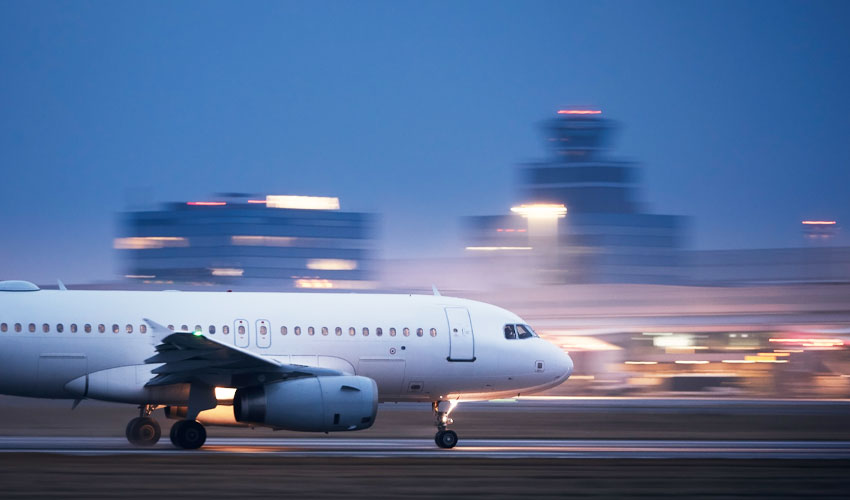The aviation industry performance in April continued along a muted growth trajectory. According to IATA’s latest data, Revenue Passenger Kilometers (RPKs) rose 3.3% year-on-year to 738.8 billion — a modest increase extending the single-digit trend that has persisted for over a year. However, seasonally adjusted RPKs grew by just 0.4% month-over-month, following a 2.3% decline in February.
Capacity growth outpaced demand yet again, with Available Seat Kilometers (ASKs) climbing 5.3%. This pushed the global average Passenger Load Factor (PLF) down to 80.7%, a 1.6 percentage point drop compared to 2024.
International traffic increased by 4.9%, but with seat capacity up 7%, the international PLF slipped to 79.9%. Latin American and Asia-Pacific carriers led capacity growth, while North American airlines reported weaker performance.
Domestic air travel remained flat, with RPKs up only 0.9%. Capacity grew 2.5%, driven by a 14.5% ASK increase in India, partially offset by declines in Australia and China. As a result, domestic PLF dropped to 82.0%.
While recovery is ongoing, the continued disconnect between capacity and demand is tempering profitability and signaling the need for more strategic growth management.
Regional Airline Trends Reflect Uneven Momentum
North America: Strategic Adjustments in a Shifting Landscape
North American airlines continued to face headwinds, with RPKs declining 1.1% year-on-year. This came as carriers expanded capacity by 3.5%, resulting in a lower average Passenger Load Factor (PLF) of 81.4%, compared to ~85% in the same period over the past two years. The U.S. domestic market saw the greatest impact, with PLF dipping to 80.3%.
Rather than pushing ahead in uncertain territory, U.S. carriers are pivoting. Major airlines — including American, Delta, and United — have withdrawn their 2025 financial forecasts and are fine-tuning capacity to align with current trends. Schedule reductions, especially in domestic markets, reflect a cautious approach in response to fluctuating consumer demand and broader economic signals. Yet, strength in business travel and premium long-haul segments continues to offer stability.
In this evolving environment, airlines are prioritizing flexibility. The ability to adapt quickly — whether by refining networks or protecting margins — is proving just as critical to aviation industry performance as raw demand numbers.
Middle East: Short-Term Dip Tied to Seasonal Factors
Middle Eastern airlines saw a modest 0.7% year-on-year dip in passenger traffic — their first decline in four years. The drop is largely attributed to seasonal dynamics like Ramadan, temporarily suppressing travel activity. On international routes, traffic declined by 1.0%, reflecting the same seasonal shift.
However, the underlying fundamentals remain stable. Carriers in the region have consistently delivered strong results in recent quarters and are well-positioned to rebound. With strategic hubs and a growing international footprint, Middle Eastern airlines continue to play a key role in connecting global markets, particularly between Asia, Europe, and Africa.
Asia-Pacific: Growth Leader, Even with Easing Momentum
Asia-Pacific carriers once again led global growth, posting a 6.3% rise in total traffic and a 9.9% increase in international RPKs. While that marks a slowdown compared to the dramatic rebound of 2024, the region continues to outperform on both demand and efficiency.
Passenger Load Factors were the highest globally at 83.5%, driven by strong showings in both domestic and international segments. Japan, in particular, recorded an 8% surge in domestic travel, pushing its PLF to a record 84.4% for the month. Key international routes — especially between North America and Asia — also showed double-digit growth (11.8%), underscoring Asia’s central role in long-haul global connectivity.
The region’s performance illustrates the strength of diversified markets and a resilient travel appetite across both leisure and business segments.

Latin America, Europe & Africa: Positive Trajectories with Room to Accelerate
Latin American carriers maintained strong momentum, with a 6.2% year-on-year increase in traffic. Growth in international demand remained solid, supported by expanding connections within the region and to North America and Europe.
European and African airlines both posted traffic increases of 4.4% and 4.1%, respectively, outperforming the global average of 3.3%. While these gains have moderated compared to the surge seen in 2023, they reflect a stable and steadily expanding market base.
In all three regions, capacity growth has been measured, and demand continues to recover at a healthy pace, reinforcing a broader narrative of stability and incremental improvement in regional aviation.
Airport Recovery Continues, But Revenue Lags Behind Demand
Airports around the world are seeing a strong resurgence in passenger traffic, but their financial recovery is still catching up. According to ACI World’s latest economic report, total airport revenues reached $146 billion in 2023, up 21.4% from the previous year. Yet this figure remains 11.4% below pre-pandemic levels, despite passenger numbers being just 5.4% under 2019 volumes.
This revenue gap highlights a core challenge: costs are rising, but commercial revenues haven’t rebounded at the same pace. Aeronautical income — mostly from airline fees — was $79 billion (14% below 2019), while non-aeronautical revenue from retail, food, and parking hit $54 billion (17% below 2019). The latter also made up a smaller share of total revenue than before the pandemic, signaling shifts in traveler spending or behavior at terminals.
Meanwhile, capital costs rose by 4% in 2023 and are now 1% higher than in 2019, fueled largely by higher interest expenses. Even though airports have made progress in managing debt, with the global debt-to-EBITDA ratio improving to 5.74:1, the financial strain is still significant.
Looking ahead, the pressure is on. ACI projects passenger numbers will reach 17.7 billion by 2043 and 22.3 billion by 2053 — nearly 2.4 times the 2024 forecast. Supporting that growth will require $2.4 trillion in global infrastructure investment by 2040. To achieve that, airports need regulatory flexibility, long-term financing tools, and strong public-private partnerships.
While aviation industry performance is improving across the board, the airport segment serves as a reminder that recovery isn’t just about traffic — it’s also about resilience, investment readiness, and the ability to build for future demand.
Who Topped the Punctuality Rankings?
Much of the aviation industry’s attention is centered on passenger demand and financial forecasts. Yet punctuality remains a critical — and often overlooked — pillar of success. In recent weeks, Middle Eastern airlines have demonstrated world-class execution in this area.
According to OAG’s latest On-Time Performance report, Oman Air topped global rankings with an impressive 96.4% OTP rate. This is a dramatic leap from its 20th position just a month prior. Royal Jordanian and Saudia followed closely, with 94.6% and 94.1% OTP respectively, placing all three carriers in the global top 10 for punctuality.
As airlines around the world face economic and capacity challenges, the consistency of Middle Eastern carriers highlights the power of leveraging data to deliver reliable, high-quality service.
Aviation Industry Performance Shows Uneven but Ongoing Growth
From global traffic trends to regional airline strategies, airport finances, and operational reliability, April offered a comprehensive view into how the aviation sector is progressing. Growth may be moderate, and capacity planning still finding its balance, but the industry continues to adapt — strategically and technologically — to a changing landscape.
The numbers tell a story of resilience and recalibration. Airlines are prioritizing agility, airports are planning for a high-demand future, and best-in-class carriers are proving that efficiency can lead the way.
In short, aviation industry performance in 2025 isn’t defined by a single metric — it’s the sum of many moving parts working toward a more robust and future-ready industry.
>> How do you see aviation performance evolving? Share your thoughts in the comments.





0 comments on “Aviation Wrap-up April 2025: Tracking Industry Performance”